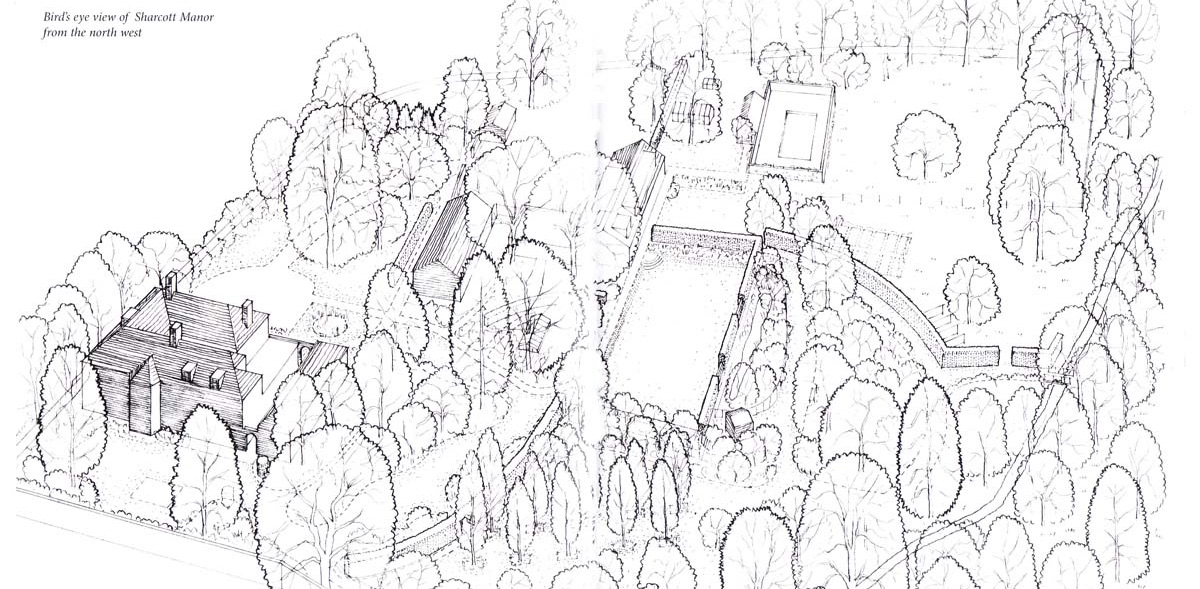Recording Wiltshire Gardens

Wiltshire has many attractive gardens and landscapes. Since 1986 members of the WGT have been researching and recording those of interest for their design and planting. A standard garden survey form serves as a check-list of the main features of each garden. This is accompanied by photographs, a plan showing photographic viewpoints and in some cases a bird’s eye view and a list of plants at the time of the survey. Other relevant material may also be stored with the survey including illustrative and historical material such as air photos, old maps and references in books or journals. (In some cases this other material is also held for gardens which have not been surveyed).
So far 71 gardens have been surveyed, some of them more than once. We are delighted that public access to these surveys is possible as they are now held with the Wiltshire Buildings Record archive located within the Wiltshire and Swindon History Centre at Chippenham.
Both the WBR buildings records and the WGT garden surveys are stored under the name of the Wiltshire Civil Parish in which they lie, which will be needed to check for a specific garden survey and for any information on the property which may be held in the building record. The list of gardens surveyed and the individual garden surveys are not available on-line but can be examined in person at the Wiltshire Buildings Record.
Where the owner agrees to publication an article based on the survey is published in the WGT Journal. Please click on this link below to see an example of the survey of Sharcott Manor.
Gardens are constantly changing; the aim is to give a picture of the garden at one moment in time, in the hope that it will be of interest to future owners and garden historians. It may sometimes also be of value where a planning application affects a garden or landscape.
A WGT member has made an index of references to 239 garden sites of interest in Wiltshire. Many of these would be worth surveying; volunteers to carry on this work would be welcome.
Working as a recorder for the Trust can be interesting and rewarding and helps protect the County’s gardens for the future.
Planning

One of WGT objectives seeks to ensure the conservation of important gardens that may be threatened by planning applications. Promoting the protection and enhancement of notable parks and gardens within Wiltshire is very important to the Trust. To this end Planning Applications are regularly scrutinised, sites occasionally visited and comments then made to planning authorities if it is felt that a planning application could potentially harm an important park or garden.
The County of Wiltshire has a number of parks and gardens on the English Heritage Register of Parks and Gardens of Special Historic Interest in England and additionally there are many non-registered parks and gardens which add variety and interest to our landscape.
Many people are aware that buildings are protected by the listing process, whilst few appreciate that some parks and gardens have a degree of protection which is similarly graded: I of international importance; II* of outstanding national importance; II of national importance.
The following Wiltshire gardens are Grade I listed: Bowood, Longleat, Stourhead, Wilton, Iford
Grade II* listed include: Corsham Court, Belcombe Court, Bradford on Avon and Grade II include: Spye Park.
Planning applications affecting Grade I and II* registered sites must be referred to English Heritage, while all cases must be referred to the Garden History Society who may comment on significant proposals. Many of the applications are referred to the Wiltshire Gardens Trust for comment but there is still no statutory role for county gardens trusts. Most planning authorities however, do consider representations made by trusts.
Many applications are well prepared and require no comment from the Wiltshire Gardens Trust. However, where there is a conflict, evidence may be submitted of the conflict with the features that are affected and, if appropriate, suggestions made as to how the proposed development may be more sympathetically achieved. Alternatively an outright objection, with reasons, will be submitted if the proposal is totally unacceptable.
